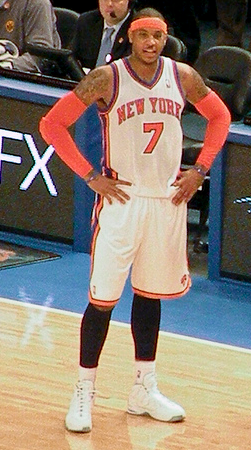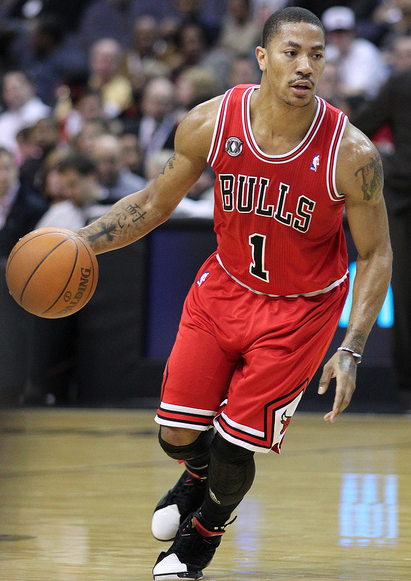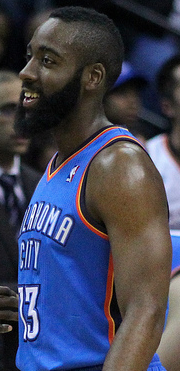NBA: Best And Worst Of The First Month

With NBA teams scrambling to adjust to the condensed post-lockout schedule, two exceptional teams have stood apart from the rest. On the other hand, two teams have already seen their head coaches forced into spending extra time with family.
The NBA season began a little more than a month ago, but due to the condensed, 66-game schedule, some teams have nearly played one-third of their regular season games already.
Every team has played more than a quarter of its schedule except for the Los Angeles Clippers, who have only logged 16 games. By season’s end, it will all even out, as the Clippers will make up for their “lazy schedule” in March and April when they play a combined 34 games in 56 days. That’s an average of 4.25 per week. On the other end of the spectrum, the Pistons, Bobcats and Bulls lead the league with 21 games apiece, played in just 35 days.
This season, those 66 games will be packed into 124 days. Last year’s typical 82-game schedule was played over 170 days. In order to finish the regular season by April 26, players will have to suit up 3.72 games per week, compared to last year’s average of 3.38. The difference may not seem like a lot, but teams are playing, on average, one more game than they’re used to every two weeks. As Yahoo!’s Marc Spears and others have suggested, this condensed schedule may very well be the cause of an increase in injuries so far.
As a result of a shortened preseason (in other words, less preparation time for newly-formed teams) and players competing on shorter rest, offense is predictably down this season. Sloppy play, as manifested in turnovers, is also on the rise. Take a look.
This season:
- 17 teams are shooting under 45% for the season
- Only 6 teams are shooting over 46% so far this season
- Only 3 teams are averaging more than 100 points per game
- The highest-scoring team is scoring 105.8 points per game
- The lowest-scoring team is averaging 85.8 points per game
- There are 6 teams currently scoring fewer than 90 points per game (*The 2005-06 season was the last time a team scored fewer than 90 points per game. In that season, the Portland Trail Blazers recorded just 88.8 points per game)
- 11 teams are committing an average of more than 15 turnovers per game
By comparison, check out these numbers from each of the last three seasons (when there were no lockouts, of course).
2010-11:
- Only 8 teams shot under 45% for the season
- 16 teams shot over 46% for the season
- 11 teams averaged more than 100 points per game
- The highest-scoring team scored 107.5 points per game
- The lowest-scoring team averaged 91.9 points per game
- Only 3 teams committed more than 15 turnovers per game
2009-10:
- Only 7 teams shot under 45% for the season
- 15 teams shot over 46% for the season
- 18 teams averaged more than 100 points per game
- The highest-scoring team scored 110.2 points per game
- The lowest-scoring team averaged 92.4 points per game
- Only 1 team committed more than 15 turnovers per game
2008-09:
- Only 7 teams shot under 45% for the season
- 9 teams shot over 46% for the season
- 13 teams averaged more than 100 points per game
- The highest-scoring team scored 109.4 points per game
- The lowest-scoring team averaged 93.6 points per game
- Only 2 teams committed more than 15 turnovers per game

Despite this predictably subpar post-lockout basketball, the Chicago Bulls and Oklahoma City Thunder have made NBA fans grin from ear to ear.
All Roses:
The Chicago Bulls have undoubtedly been the toast of the East so far. They’ve held their opponents to a league-low 87.0 points per game (tied with the 76ers). In addition to boasting a swarming defense, the team has been nearly unbeatable, whether it is hosting teams at the United Center (9-1) or playing on the road (8-3). Reigning MVP Derrick Rose has been solid this season, but he has not had to do as much, individually, compared to last season.
In fact, the team won four of the five games he missed due to injury. For that reason, Rose’s decreased scoring output has not hurt the Bulls. Not at all. The addition of free agent Richard Hamilton has effectively taken pressure off the team’s top three scorers, Rose, Luol Deng and Carlos Boozer. Last season, the Bulls’ top three scorers recorded nearly 61 percent of their team’s points. This season, their scoring output is down to 54 percent of the team’s points.
Although soon-to-be 34-year-old Hamilton has incurred his share of injuries, when he’s healthy, his tenacious defense and scoring are invaluable. Guards C.J. Watson and Ronnie Brewer have also stepped up to solidify the supporting cast. In Watson’s three starts in place of the injured Rose, he averaged 16.3 points and 7 assists en route to three Chicago victories.
Lightning Fast:
The Oklahoma City Thunder are extremely young and employ an excitingly fast-paced game. Boasting a starting five that is, on average, 24.4 years old, the Thunder’s youthful legs do not seem to mind the grind of this season’s frenetic schedule. Like last year, the Thunder are powered by all-stars Kevin Durant and Russell Westbrook.
Durant’s field goal percentage is the highest of his career at nearly 51 percent. That number is especially impressive for a player like Durant, who attempts nearly 4.5 three-pointers per game. In addition, KD can count on being paired with Westbrook for some time now. On January 19, the Thunder signed Westbrook to a contract extension through the 2016-17 season to ensure their nucleus would remain together for the foreseeable future.

Third-year shooting guard James Harden’s considerable improvement has been the biggest change for Oklahoma City. Harden’s scraggly beard may get a great deal of attention, but it’s his game that has done all the talking this year. The sixth man has scored nearly 17 points per game off the bench despite playing fewer than 30 minutes per night. Harden’s 88 percent free throw shooting has helped the Thunder lead the league in that department. His improvement at the line is especially beneficial, considering the fact that Harden gets to the line 6.6 times per game, placing him eighth in the league in free throw attempts. By comparison, he barely cracked the top 50 in trips to the charity stripe last season. If the season ended today, Harden would easily win the Sixth Man of the Year award.
Serge Ibaka’s big man contributions should not be ignored. He’s patrolling the paint, blocking 2.5 shots per game and recording 6.7 rebounds in just under 26 minutes per contest. To his credit, although former Ohio State Buckeye Daequan Cook doesn’t play all that much, he’s been pretty good from long-range, connecting on 38.1 percent of his attempts.
Flip, Out in D.C.
The Wizards came into the season awfully inexperienced and reeling from a miserable previous season. They were the fourth-worst team in 2010-11, but management hoped that the team would show improvement this season. The front office hoped the team would coalesce around talented 21-year-old point guard John Wall. Neither has happened. Washington won just two of its first 17 games, and as a result, head coach Flip Saunders was fired less than a month into the season. Since Randy Wittman took over, the Wizards have won two of three, but don’t read too much into that. Both wins came against the lowly Bobcats, who are 3-18 on the season (a record that’s even worse than the Wizards’).
The entire team is clearly struggling, but three Wizards stand out for playing especially poor basketball. Nick Young has been incredibly inefficient, shooting just 41 percent (down from 44 percent last season) despite taking his team’s most shots, attempting 14.5 per contest. Andray Blatche’s scoring and shooting percentage have dropped by 6.5 points and 6.5 percentage points, respectively. Blatche’s 38 percent field goal completion is the worst of his seven-year career. Even veteran Rashard Lewis has seen a precipitous drop in his scoring output. For the first time since 1999-00, he is failing to average double figures. His field goal percentage is down from last year’s 44.6 percent to 39.0. Even Wall is turning the ball over far too often, at a clip of 4.2 per game. Although young point guards often have this problem, Wall must take better care of the basketball in order for his team to have any hope of significantly improving.
Misery Loves Company:
Although the season started just over a month ago, Saunders is not the only coach who has already been given the pink slip this season. The Kings actually fired Paul Westphal just seven games in. While it is true that the Kings’ 2-5 start was not the most promising, Westphal would likely still have his job if not for his public spat with young center DeMarcus Cousins. On Jan. 1, Westphal released a statement claiming that Cousins had demanded a trade. Although the statement claimed that Westphal had the support of management, he evidently did not, as he was dismissed four days later. The team has not fared much better under interim coach Keith Smart, but Cousins’ playing time has slightly increased from nearly 26 minutes per game to approximately 29.5.
Reach Aaron by email or follow him on Twitter.



